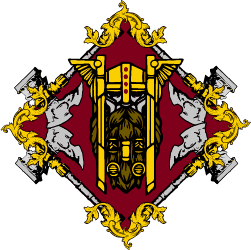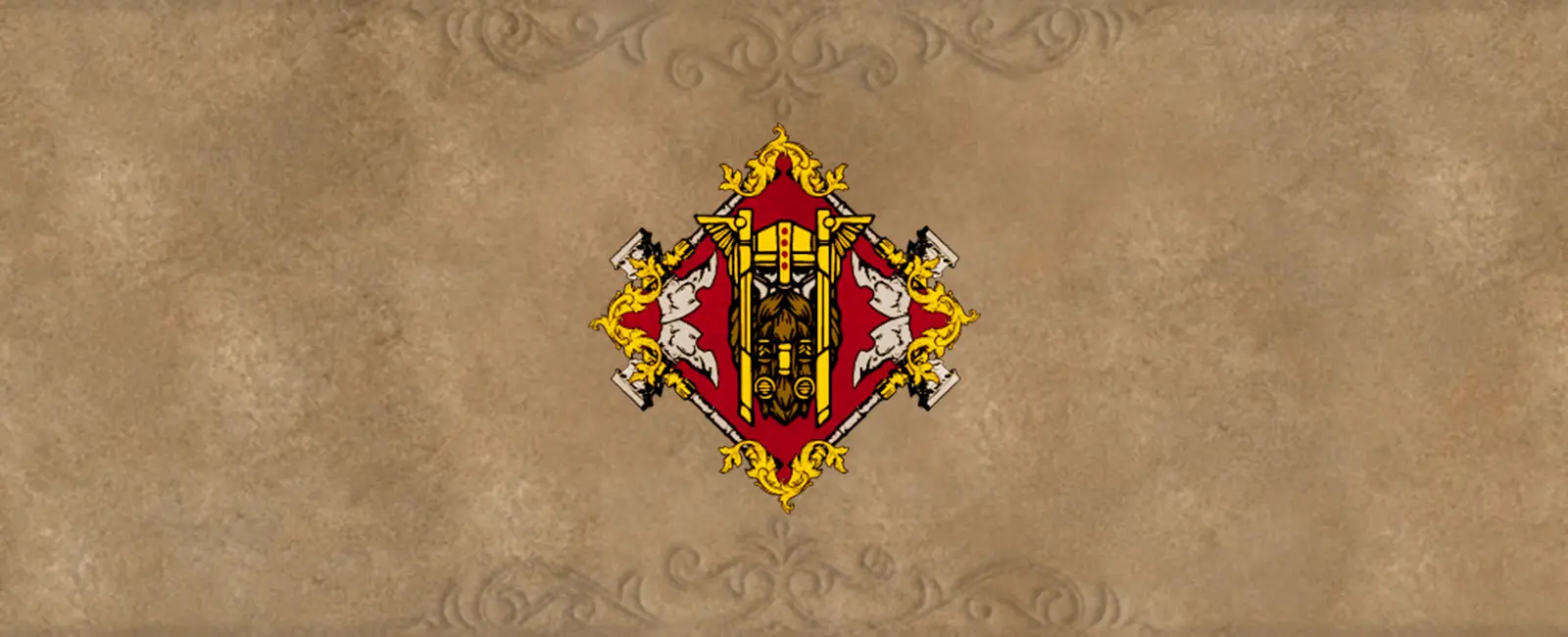Kingdom of Dam Lodir
The Kingdom of Dam Lodir is an independent Dwarven nation composed mostly from the teigs of the Northern Amadels. It is one of two rivaling dwarf nations, locked in a cultural stalemate. Together with the Kingdom of Halanhar and Clan Telvarsir they form the Elder Pact.
Basic Information
Location
Northern AmadelsPopulation
2.6mEthnic Majority
Lodiran(Dwarven)Official Languages
Dwarvish(official)Gnim(supported)
YMRI
YMRI Rating:
N/A
Active Warrnings
- DEBYE PASS TRAVEL RESTRICTIONS
- THE DISCREPANCY
The kingdom of Dam Lodir regullarly send partols into Debye Pass for unauthorized travelers. Those found without permits can face a fine of up to 2
The dangers of the Discrepancy should not affect the vast majority of foreign individuals or companies. Regardless, it is recommended to be of familliarity with dwarven trade, traditions and behaviors before engading in any sort of exchange.
Current Date: 2nd of Latsum, 1572

Type
Geopolitical, Kingdom
Capital
Head of State
Government System
Monarchy, Elective
Power Structure
Feudal state
Economic System
Mixed economy
Subsidiary Organizations
Related Traditions
Related Professions
Controlled Territories
Neighboring Nations
Notable Members
Related Myths
Pact Members
The alliance between the various elf species and the dwarves of the Northern Amadels predate both the Kingdom of Halanhar and the Kingdom of Dam Lodir and their myths are woven together. Despire this seemingly warm and close relations, the Lodirans are the pact members who contributed the most in past conflicts with mankind, yet to this day recieve the least amount of help from the three in their current conflicts.
Pact Members
The elves of deepvale and the Lodirans always held close relations in comparison to the other elven nations. Clan Telvarsir and the Kingdom of Dam Lodir hold several trade deals, pacts and agreements, some of them thousands of years old.
Trade Partners
As far as the Kingdom of Dam Lodir is concerned, trading with the Archduchy of Taldir is a convenient way to trade with the humans of Lake Kadia without violating the Treaty of Four. These trade deals are priceless from the archduchy's stand point, as they ensure their independence from the Kingdom of Navara.
Cold Peace
In the past, hostilities between the newly arriving dragonborn and the dwarf raged across the Central Amadels. Kir Drakar eventually grew in size as well as became more stable and the dwarves were no longer able to sustain their assaults. While they still do not recognize the dragonborn's claim on their former territory, both sides agree that protection of the Debye Pass against the forces of the Hegemony of Xesian and the Gorak Orsinium are far more crucial for their survival.
Neutral Trade Partner
Both nations hold a steady trade agreement, with Kingdom of Dam Lodir mostly supplying high quiality minerals to the SLFK who in return exports back grain, meats, hides and more.
Ancient Rivalry
Both Kindoms of Dam Lodir and Dam Tarihr view their Saga as the correct one, their throne as the direct continuation of the mythical Mirror-Mere and blame the other for abandoning them during the Days of Reckoning. The feud is among the oldest on the continent and entire organizations have risen in hopes of solving it.
Cold War
The Kingdom of Dam Lodir views Evornfel as a rouge nation and as an illegitimate contender to their lands. Furthermore, Evornfel acceptance of human settlers is considered blasphemous by the Lodiran who signed the Treaty of Four, banning mankind from settling in the Amadel Mountains. Evornfel on the other hand, view Dam Lodir a relic of the past that clings to dead traditions. The two never came to blows, but spies and agents are known to be regularly in use to gather intelligence and sabotage both economy and military assets, with trade dominance in Debye Pass being their top priority.
At War
Both the Kingdom of Dam Lodir and the Gorak Orsinium compete for control over Debye Pass. The conflict started when the orcs of Icespire Mountain began to expand their borders under leadership of a local tribe, and only intensified with the inception of the Orsinium in 1488 AC.




Comments